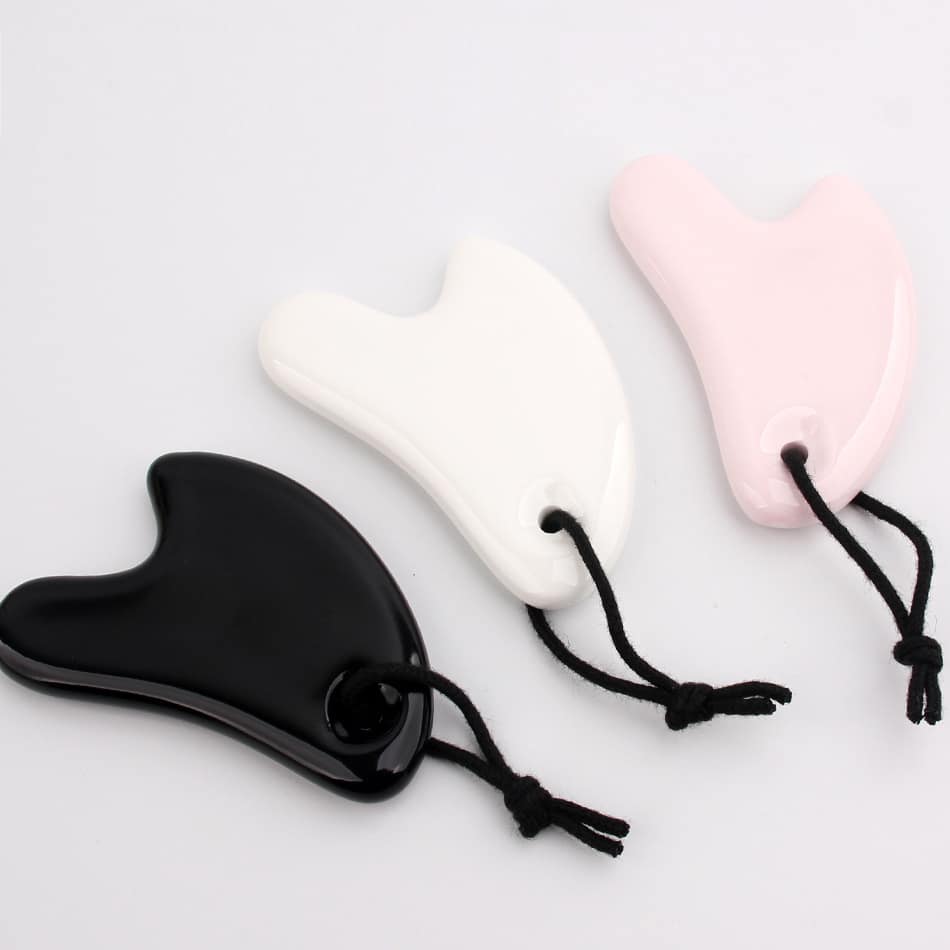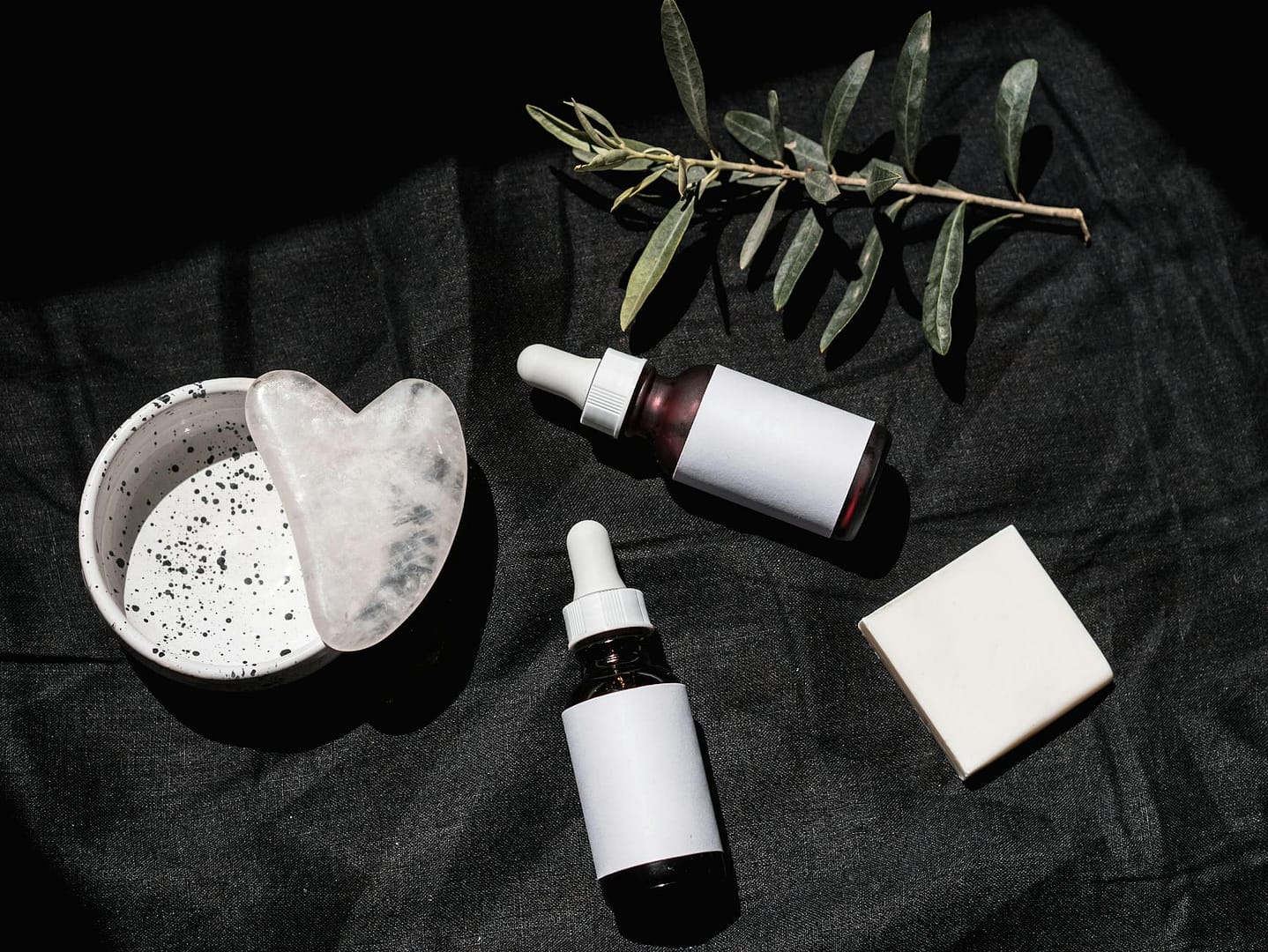Gua Sha, a traditional Chinese healing technique, can be performed using tools made of various materials, including ceramics and jade. Each material brings its own unique set of advantages and disadvantages, catering to different preferences, needs, and practices. Here’s a detailed comparison to help you make an informed decision:
Ceramic Gua Sha Tools

Advantages:
Innovative Design: Ceramic allows for a wider range of shapes and sizes, making it more adaptable to different parts of the body. This flexibility in design can enhance the effectiveness of the massage.
Smooth Surface: Ceramic tools generally have a smoother surface, reducing friction during use and providing a gentler experience on the skin.
Thermal Stability: Ceramic maintains stability during temperature changes, making it ideal for incorporating into hot therapy sessions.
Easy to Clean: The non-porous surface of ceramic tools makes them less likely to harbor bacteria, making cleaning and disinfecting relatively straightforward.
Cost-Effective: Typically, ceramic tools are less expensive compared to jade, making them more accessible to a broader audience.
Disadvantages:
Fragility: Ceramics are inherently more brittle and prone to breaking if dropped or mishandled.
Lack of Natural Coolness: Unlike jade, ceramic does not provide a natural cooling sensation, which some users find beneficial for reducing inflammation.
Lack of Traditional Appeal: For enthusiasts of traditional Chinese medicine, ceramic tools might lack the cultural and historical significance associated with jade.
Jade Gua Sha Tools

Advantages:
Cooling Touch: Jade naturally stays cool, which can help soothe the skin and reduce inflammation, making it particularly beneficial for irritated or sensitive skin.
Cultural Significance: Jade holds a deep and historical significance within Chinese culture. It is revered not just for its beauty but also for its believed healing properties, making it a favored choice among practitioners of traditional Chinese medicine.
Energy Transfer: Many people believe that jade possesses energetic properties that can enhance healing and balance the body’s energy during the massage.
Disadvantages:
Design Limitations: The hardness of jade limits the variety of shapes and sizes that can be crafted, which might restrict the tool’s adaptability to different body parts.
Higher Cost: High-quality jade tools tend to be more expensive, which might not be affordable for everyone.
Maintenance: Jade requires careful cleaning and maintenance to preserve its appearance and avoid damage, making it somewhat less convenient compared to ceramic.
Conclusion
Choosing between ceramic and jade Gua Sha tools ultimately depends on individual preferences, budget, and the importance placed on cultural and historical significance. Ceramic tools offer innovative designs, ease of cleaning, and cost-effectiveness, making them a practical choice for everyday users. On the other hand, jade tools provide a cooling touch, cultural depth, and potential energetic benefits, appealing to those who value traditional practices and aesthetics.
By considering these factors, users can select the material that best suits their personal needs and preferences, ensuring a satisfying and effective Gua Sha experience.
Contact with Dongguan Perfect Craft team, select the best match one.



